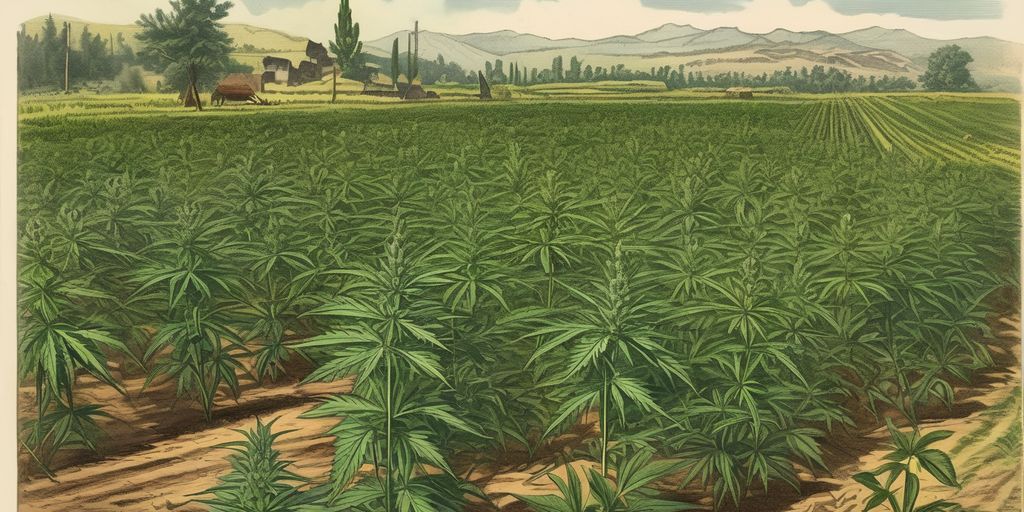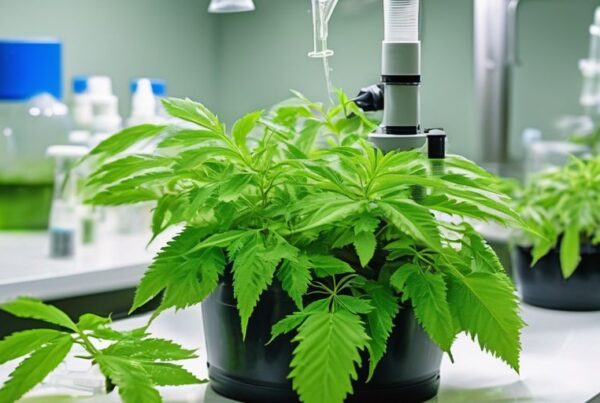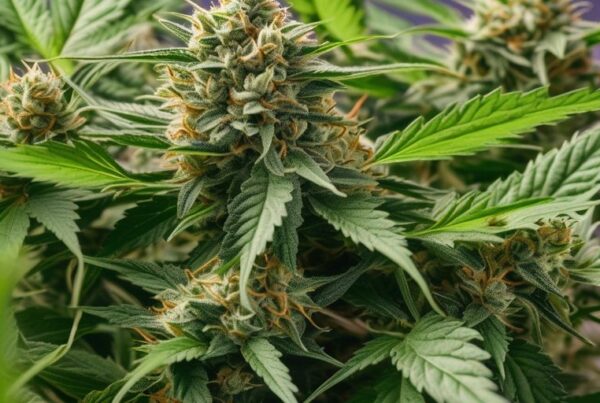Sativa strains, a distinct category of the cannabis plant, are renowned for their energizing and uplifting effects. With a history that dates back thousands of years, these strains have played a significant role in various cultures and have adapted to diverse climates around the globe. This article delves into the rich history, evolution, and cultural impact of Sativa strains, providing a comprehensive overview of their journey from ancient times to the modern era.
Key Takeaways
- Sativa strains originated in equatorial regions and are adapted to long growing seasons and warm climates.
- These strains have a rich history of cultivation across various continents, influencing many cultures.
- Sativa plants are known for their tall stature and thin leaves, distinguishing them from other cannabis types.
- They are popular for their cerebral, energizing effects, which contrast with the more relaxing effects of Indica strains.
- Recent advancements in breeding have led to the creation of numerous hybrid strains, enhancing both recreational and medicinal benefits.
Origins and Early History
Ancient Uses
Cannabis Sativa, one of the oldest cultivated plants, has been used for thousands of years for its medicinal properties, fiber, and psychoactive effects. The use of cannabis dates back to ancient civilizations in Asia, where it was valued for its utility in fabric and rope making as well as for spiritual and healing purposes.
Cultural Significance
The cultural significance of cannabis is profound, influencing religions and societies across Asia and the Middle East. It was integrated into rituals and daily life, symbolizing both a medicinal herb and a sacred plant. This deep-rooted significance highlights the enduring influence of cannabis in historical cultures.
Spread Across Continents
The spread of cannabis across continents was facilitated by ancient trade routes such as the Silk Road. It reached Europe, Africa, and eventually the Americas, adapting to various climates and integrating into different cultures. This widespread adoption underscores the plant’s versatility and enduring appeal.
Geographical Spread and Adaptation
Equatorial Origins
Sativa strains are thought to originate from tropical and subtropical regions such as Central and South America, Africa, and Southeast Asia. These regions, closer to the equator, provide the ideal conditions for Sativa plants, characterized by warm climates and long growing seasons.
Adaptation to Climates
Sativa strains have naturally adapted to thrive in their equatorial origins. The ability to flourish in warm climates with extended periods of sunlight is a key feature of these plants. This adaptation includes developing long, narrow leaves which allow for efficient photosynthesis and heat dissipation.
Regional Varieties
Over time, as Sativa strains spread across different continents, they evolved into distinct regional varieties. Each variety adapted to its new environment, leading to a rich diversity of Sativa strains worldwide. This evolution is marked by the plant’s ability to adapt to various climatic conditions beyond its original equatorial habitat.
Evolution and Development
Landrace Strains
Landrace strains represent the purest forms of cannabis genetics, preserved over centuries due to geographical isolation. These strains are crucial for understanding the genetic baseline from which modern hybrids are developed.
Hybridization
The process of hybridization has been pivotal in enhancing the diversity of cannabis strains. By crossbreeding different landrace strains, breeders have been able to combine desirable traits, leading to strains with improved potency, flavor, and resistance to pests.
Modern Cultivation Techniques
Advancements in cultivation technology have revolutionized how Sativa strains are grown. Techniques such as hydroponics and controlled indoor environments allow for year-round cultivation, significantly impacting the quality and consistency of the final product.
Characteristics of Sativa Strains
Physical Attributes
Sativa strains are distinguished by their tall stature and thin leaves, which are well-suited to warm climates. These plants can grow up to 12 feet tall, making them significantly taller than their Indica counterparts. The leaves are long and narrow, enhancing their ability to capture sunlight efficiently.
Effects on Users
Sativa strains are known for their uplifting and energizing effects on the mind and body. They are often preferred for daytime use due to their ability to enhance creativity and focus. The high from Sativa tends to be much more cerebral and energizing, making it ideal for social activities and creative projects.
Comparison with Indica Strains
Sativa and Indica strains exhibit distinct differences in both physical characteristics and effects. While Indica strains are shorter with bushier leaves and tend to produce a relaxing and sedative effect, Sativa strains provide a more invigorating experience. This contrast is crucial for users choosing a strain that best suits their needs.
Popular Sativa Strains and Their Impact
Well-known Varieties
The world of Sativa strains is vast, with countless varieties to explore. Some popular Sativa strains that have gained recognition among cannabis enthusiasts include Sour Diesel, Durban Poison, and Jack Herer. These strains are celebrated not only for their unique flavors and aromas but also for their ability to enhance creativity and focus.
Influence on Cannabis Culture
Sativa strains have significantly shaped the cannabis culture with their uplifting and energizing effects. They are often associated with artistic and creative pursuits, making them a staple in discussions around cannabis and creativity. The influence of Sativa strains extends beyond individual use, impacting festivals, music, and art scenes globally.
Hybrid Innovations
In recent times, with advancements in breeding techniques and the emergence of hybridization, Sativa strains have also been crossbred with other varieties. This has resulted in a wide range of hybrid Sativa strains that offer a combination of Sativa and Indica characteristics. These innovations continue to push the boundaries of cannabis genetics, leading to new and exciting possibilities in cannabis cultivation and consumption.
Medical and Recreational Use
Therapeutic Benefits
Sativa strains are celebrated for their wide range of therapeutic benefits. These include alleviating symptoms of chronic pain, depression, and anxiety, as well as enhancing focus and creativity. The uplifting effects of Sativa make it a preferred choice for daytime use.
Legal Status Worldwide
The legal status of Sativa varies significantly across the globe. While some countries have fully legalized cannabis for medical and recreational use, others maintain strict prohibitions. This legal landscape is continuously evolving as more governments recognize the potential benefits of cannabis.
Consumer Preferences
Consumer preferences have shifted significantly towards Sativa strains due to their energizing and uplifting effects. This trend is evident in both recreational and medicinal contexts, where users seek out Sativa for its ability to enhance mood and increase energy levels.
The Future of Sativa Strains
Research and Breeding
The continuous advancement in genetic research and breeding techniques promises to bring forth new Sativa strains with enhanced characteristics. Future innovations will likely focus on increasing potency, improving disease resistance, and enhancing flavor profiles.
Potential Legal Changes
As public opinion and legal landscapes evolve, significant changes in the legal status of Sativa strains are anticipated. This could lead to more widespread legalization and better regulatory frameworks, facilitating easier access and research.
Consumer Trends
Consumer preferences are shifting towards more specific and varied cannabis experiences. Sativa strains, known for their energizing effects, are likely to see increased demand, particularly for medical use where their uplifting properties are most beneficial.
Cultural and Economic Impact
Economic Contributions
The cannabis industry has significantly boosted economies where it’s legally embraced. The global market for cannabis is projected to expand substantially, with the United States, Canada, and parts of Europe leading in market growth. The industry not only generates billions in revenue but also creates numerous jobs, from cultivation to retail.
Cultural Shifts
Cannabis has transitioned from a stigmatized substance to a widely accepted one in many cultures. This shift is largely due to changing laws and the recognition of its therapeutic benefits. The plant’s role in music, art, and social gatherings underscores its cultural relevance.
Global Influence
Cannabis has a profound global influence, affecting legal policies, healthcare practices, and social norms across continents. The plant’s integration into various cultures around the world demonstrates its enduring appeal and versatility.
Sativa Strains in Popular Media
Representation in Films and Books
Sativa strains have been depicted in various films and books, often highlighting their energizing effects and association with creativity. These portrayals have helped shape public perception, sometimes reinforcing stereotypes about cannabis use.
Influence on Public Perception
Sativa strains have significantly influenced public perception of cannabis, becoming synonymous with creativity and productivity rather than just recreational use. This shift has been crucial in changing attitudes and promoting wider acceptance and legalization efforts.
Media Misconceptions
While Sativa strains are popular in media, there are often misconceptions about their effects and uses. Media sometimes exaggerates or misrepresents the impact of Sativa, leading to a skewed understanding among the general public. It’s important to approach such portrayals with a critical eye and seek information from reliable sources.
Conclusion
In conclusion, the journey through the history of Sativa strains reveals a rich tapestry of cultural, geographical, and scientific evolution. From their ancient origins in equatorial regions to their spread across the globe, Sativa strains have adapted and thrived, influencing both ancient and modern societies. The exploration of their unique characteristics, cultivation methods, and medical benefits underscores their significance in the cannabis community. As we continue to learn and adapt these plants for various uses, the story of Sativa strains remains a compelling chapter in the broader narrative of cannabis.
Frequently Asked Questions
What is the historical origin of Sativa strains?
Sativa strains originated thousands of years ago, with early cultivation and use spanning across various cultures and continents, particularly in regions close to the equator like Southeast Asia, Central America, and parts of Africa.
How have Sativa strains evolved over time?
Sativa strains have adapted to various climates and growing conditions as cannabis cultivation spread worldwide. This evolution led to the development of different landrace Sativa strains, which are indigenous varieties not crossbred with other strains.
What are the main characteristics of Sativa strains?
Sativa strains are known for their uplifting and energizing effects, making them popular for those seeking a more invigorating experience. They typically feature longer, narrower leaves and thrive in warm climates.
What are some popular Sativa strains?
There are many well-known Sativa strains, each with unique characteristics and effects. Some popular varieties include names like Sour Diesel, Jack Herer, and Green Crack.
How do Sativa strains impact medical and recreational users?
Sativa strains are often used for their therapeutic benefits, providing relief from fatigue, depression, and stress. They are also favored in recreational settings for their ability to enhance creativity and focus.
What future developments are expected for Sativa strains?
Future developments in Sativa strains include advanced breeding techniques, potential legal changes affecting cultivation and use, and evolving consumer preferences towards more specific effects and experiences.








